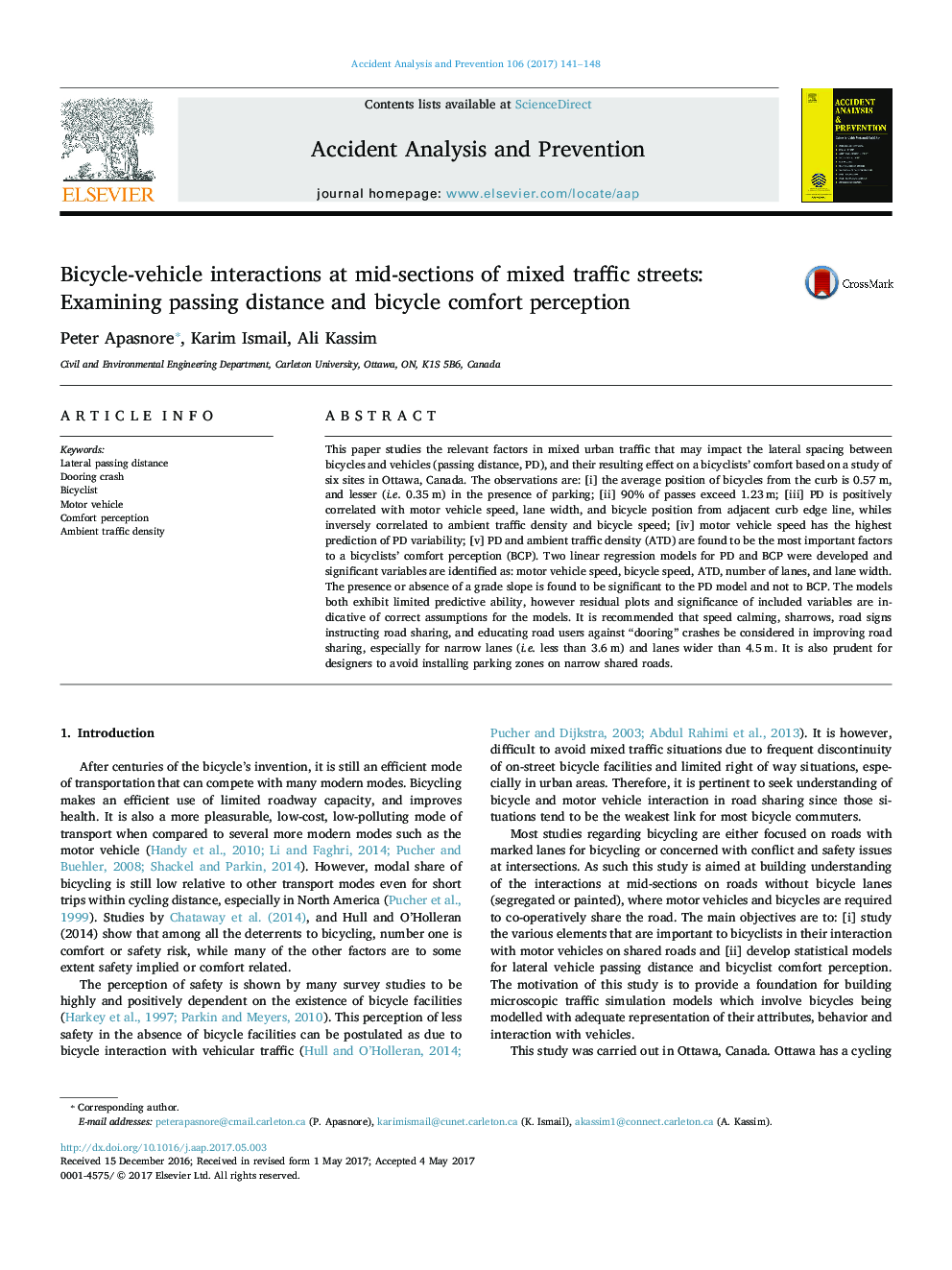| Article ID | Journal | Published Year | Pages | File Type |
|---|---|---|---|---|
| 4978680 | Accident Analysis & Prevention | 2017 | 8 Pages |
Abstract
This paper studies the relevant factors in mixed urban traffic that may impact the lateral spacing between bicycles and vehicles (passing distance, PD), and their resulting effect on a bicyclists' comfort based on a study of six sites in Ottawa, Canada. The observations are: [i] the average position of bicycles from the curb is 0.57Â m, and lesser (i.e. 0.35Â m) in the presence of parking; [ii] 90% of passes exceed 1.23Â m; [iii] PD is positively correlated with motor vehicle speed, lane width, and bicycle position from adjacent curb edge line, whiles inversely correlated to ambient traffic density and bicycle speed; [iv] motor vehicle speed has the highest prediction of PD variability; [v] PD and ambient traffic density (ATD) are found to be the most important factors to a bicyclists' comfort perception (BCP). Two linear regression models for PD and BCP were developed and significant variables are identified as: motor vehicle speed, bicycle speed, ATD, number of lanes, and lane width. The presence or absence of a grade slope is found to be significant to the PD model and not to BCP. The models both exhibit limited predictive ability, however residual plots and significance of included variables are indicative of correct assumptions for the models. It is recommended that speed calming, sharrows, road signs instructing road sharing, and educating road users against “dooring” crashes be considered in improving road sharing, especially for narrow lanes (i.e. less than 3.6Â m) and lanes wider than 4.5Â m. It is also prudent for designers to avoid installing parking zones on narrow shared roads.
Keywords
Related Topics
Physical Sciences and Engineering
Chemical Engineering
Chemical Health and Safety
Authors
Peter Apasnore, Karim Ismail, Ali Kassim,
